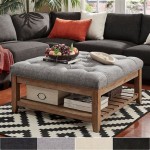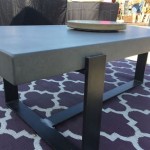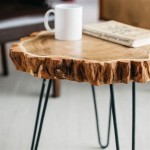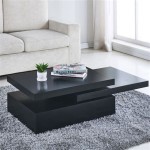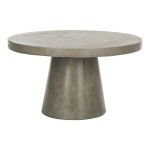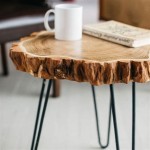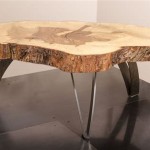Decorating Ideas For Small Accent Tables
Small accent tables, often overlooked, represent a potent design tool for enhancing the aesthetic appeal and functionality of living spaces. These versatile pieces, ranging in size and style, can be strategically deployed to add personality, provide convenient surfaces, and complement existing furniture arrangements. The effective decoration of small accent tables necessitates a nuanced understanding of scale, proportion, and the overall design goals of the room. This article explores various strategies and techniques for transforming these diminutive surfaces into impactful focal points.
Before embarking on the decoration process, it is crucial to assess the context in which the accent table resides. Consider the surrounding furniture, the room's color palette, and the intended purpose of the table. Is it intended to serve as a resting place for beverages, a platform for displaying decorative objects, or a functional surface for reading materials? The answer to these questions will significantly inform the selection of appropriate decorative elements.
Scale and proportion are paramount when dealing with small surfaces. Overcrowding a small accent table with too many items or items that are disproportionately large can create a cluttered and visually overwhelming effect. Conversely, leaving the table entirely bare can render it insignificant and uninspired. The key lies in achieving a harmonious balance between functionality and aesthetics, employing a curated selection of items that complement each other in terms of size, shape, and color.
Balancing Functionality and Aesthetics
The primary function of the accent table must be considered when selecting decorative objects. If the table is intended to be a practical surface for everyday use, prioritizing functional items such as lamps, coasters, and small trays is crucial. These items can be stylish and decorative in their own right, contributing to the overall aesthetic while serving a practical purpose.
A well-chosen lamp can dramatically enhance both the functionality and the visual appeal of an accent table. Opt for a lamp with a shade that complements the room's color scheme and a base that is proportional to the size of the table. A lamp also adds ambient lighting, creating a warm and inviting atmosphere. The size of the lamp is critical. A lamp that is too large will dominate the space, while a lamp that is too small will be insignificant.
Coasters are essential for protecting the surface of the accent table from water rings and spills. Choose coasters that are both functional and aesthetically pleasing. Options include coasters made from materials such as marble, wood, ceramic, or metal, each offering a different texture and visual appeal. They can be stacked neatly when not in use, adding to the overall visual interest of the table.
Small trays can be used to corral smaller items such as remote controls, keys, or jewelry. A decorative tray not only keeps the table organized but also adds a touch of elegance. Trays can be found in a variety of materials, shapes, and sizes, allowing for customization to suit the specific needs and style of the space.
If the accent table is primarily intended for decorative purposes, one can afford to prioritize artistic expression. However, even in this scenario, maintaining a sense of balance and avoiding clutter is essential.
Employing the Rule of Three
The "rule of three" is a design principle that suggests that items arranged in odd numbers are often more visually appealing than those arranged in even numbers. This principle can be effectively applied to the decoration of small accent tables.
Consider grouping three objects of varying heights and textures to create a dynamic and visually interesting display. For example, a stack of books, a small decorative sculpture, and a potted plant can create a balanced composition that draws the eye. The different heights will add visual interest, preventing the display from looking flat or static.
When selecting the objects, consider their color palette and how they complement each other and the surrounding room. A cohesive color scheme will create a more harmonious and visually appealing display. Textural contrast is also important; incorporating items with different textures, such as smooth ceramic, rough wood, and soft fabric, can add depth and interest.
The rule of three is not a rigid formula, but rather a guideline to encourage thoughtful composition and balanced arrangements. Experiment with different combinations of objects to find what works best for the specific table and the overall design of the room.
Another way to make use of the rule of three is to use variations of the same item. This can be achieved by using three different sized candles, three vases or three differently sized picture frames.
Incorporating Natural Elements
Introducing natural elements can breathe life and vitality into any space, and accent tables are no exception. The inclusion of plants, flowers, or natural materials can add texture, color, and a sense of organic beauty to the table's decorative scheme.
Small potted plants are an excellent choice for accent tables. Opt for low-maintenance varieties such as succulents, cacti, or air plants, which require minimal care and can thrive in a variety of lighting conditions. The greenery adds a refreshing touch and can help to soften the lines of the surrounding furniture.
Fresh flowers are another way to bring the beauty of nature indoors. A small vase of seasonal flowers can add a pop of color and fragrance to the room. Choose flowers that complement the room's color scheme and that are appropriately sized for the table. Consider using a single stem in a minimalist vase for a more contemporary look.
Natural materials such as wood, stone, and shells can also be incorporated into the accent table's decor. A wooden bowl filled with decorative stones or a collection of seashells can add texture and visual interest. These elements can evoke a sense of tranquility and connection to the natural world.
Driftwood or uniquely shaped branches can also be used as decorative elements. They can be displayed as standalone objects or incorporated into a larger arrangement. The natural textures and shapes of these materials add a sense of organic beauty and can create a focal point on the accent table.
The choice of natural elements should be guided by the overall style of the room. In a contemporary space, minimalist arrangements of succulents or a single orchid may be most appropriate. In a more traditional space, a vase of roses or a collection of antique shells might be a better fit.
Mirrors can also be used to enhance the effect of the decorating efforts. Placing a mirror behind the accent table will give the illusion of more space, whilst also reflecting light. This will help to create a more inviting and airy atmosphere.
Ultimately, the decoration of small accent tables is an exercise in mindful curation and balanced composition. By carefully considering the table's function, the surrounding environment, and the principles of design, one can transform these diminutive surfaces into impactful focal points that enhance the beauty and functionality of the living space. The key is to experiment with different arrangements and combinations of objects until a harmonious and visually appealing result is achieved.

9 Gorgeous Accent Table Décor Ideas Living Spaces

Home Decor 101 How To Decorate End Tables The Turquoise

5 Tips To Decorate Accent Tables Like A Pro Setting For Four Interiors

20 Gorgeous Side And Accent Table Ideas For Your Small Space Living Room Decor

9 Gorgeous Accent Table Décor Ideas Living Spaces

Home Decor 101 How To Decorate End Tables The Turquoise

5 Tips To Decorate Accent Tables Like A Pro Setting For Four Interiors

Simplified Decorating End Table Decor Ideas Bless Er House

Simplified Decorating End Table Decor Ideas Bless Er House

Side Table Decor Ideas 33 Best Stylish Functional End Tables For Your Home Parachute Blog
Related Posts

